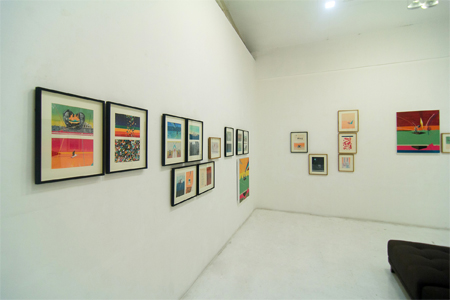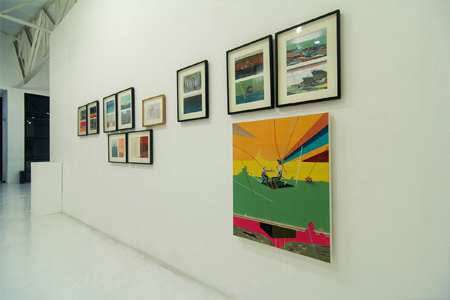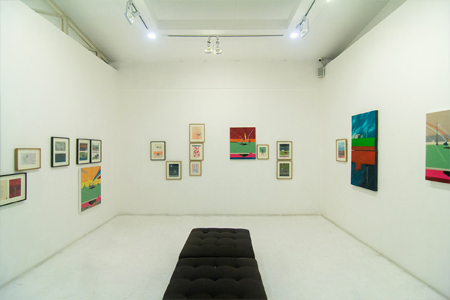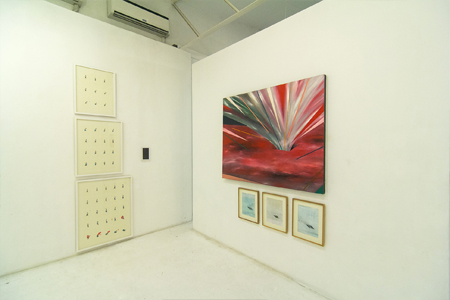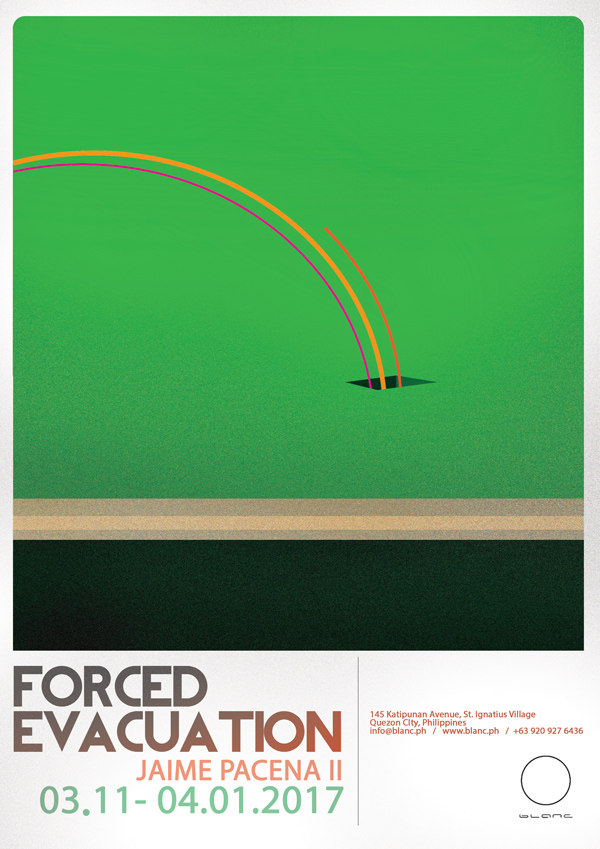
FORCED EVACUATION
Jaime Pacena II
BLANC GALLERY
145 Katipunan Ave. St. Ignatius Village, Quezon City
March 11-April 01, 2017
Each one writes history according to his convenience.
-Dr. Jose P. Rizal
The idea of evacuation suggests an immediate threat to one’s safety. When one’s stability is about to fall apart, paradoxically, he or she must move outside of this comfort zone in order to keep it.
How do we value our stability? How much are we willing to sacrifice to protect our notions of security? How much security are we willing to give up for something else? How much change are we willing to accept if our comfort zone is challenged?
These questions are particularly relevant to people who always seem to survive turbulent times – it is almost a Filipino trait, we claim. We brag about our fighting spirit and our ability as a nation to converge in addressing matters for the benefit of the greater good.
Every year we go through this ordeal – or exercise – shaken, beaten, and spat on by natural disasters, political agendas, different religious beliefs, poverty and human error. Threats to our stability come in different forms. And some of us fight our way to survive. Some are lost and gone – casualties. And some continue to fight. But majority of us today have become mere observers.
Observers who choose to watch from afar as if it were a noontime show habit. Observers who refuse to question the status quo, fearful of undermining our own stability. Instead, we sit back and watch, or look away as minorities and the helpless are taken advantage of. For to question the status quo would betray our roles as active participants or silent accomplices in oppression and violence.
Not a day goes by where innocents are not murdered in broad daylight on the streets with this ongoing “war.” We wake up every morning to prostitution, corruption, and drugs in the news and social media and our constant exposure to this has made us all experts in sociology, law, and psychology, etc.. Once dealt with on the news and/or social media with some comment or bite-sized analysis, we go back to our comfortable lives and go to sleep at night thinking that we are safe. A majority of us live day-to-day individually – dealing with our own challenges and worries, without seeing ourselves as part of a bigger society.
But not all of us.
In this exhibition, I present a narrative in sequences based on my own personal timeline from 1980-2017, locating myself at an intersection of my own private-personal history and my nation’s, aware that both histories unfold at the same time.
In this recent series, I invite the audience to reflect with me and make their own inquiries into our views of and roles in the narrative we all belong to. Despite all the efforts of different organizations and groups to convince us of their version of truth, we hold the power. Do we jump, or not?
If history is our continuing present, then we must work to understand where we are. The future is uncertain if the present is uncertain.
This exhibition was supposed to be about Rikuzentakata City that was washed away during 2011 tsunami disaster in the Tohoku Region of Japan. My original plan was to highlight data and present activities during my Artist-in-Residency last 2013, 2014, and 2016. But a five-day art retreat with Elmer Borlongan, Emmanuel Garibay, and Mark Justiniani last January of 2017 changed my direction. I reflected on something that Jose Tence Ruiz wrote in his Facebook account last November 2016 and it has become a personal mantra that has helped me question my own stability and study how I can contribute to this dialogue –
Like our parents who had a war inflicted on them, like some of us who had Martial imposed without our will, your generation must now learn to really live in a world that is difficult and complex, and earn the stripes to be the adults that we are now, and that our parents were when they told us that life was not the yellow brick road we all thought it would have to be. We must live, tough as it has become.
The two weeks’ production time for this exhibition was more of a process of meditation than a mere production of paintings as objects. I veered away from my usual process of print and mixed media, and inquiries about the ecosystem of the Philippine Contemporary Art. Instead, I started creating these small paintings because I wanted it to be more of an intimate reflection on the historical events that happened during my lifetime. This project is also framed like video storyboards – they show connected sequences, but also fragments of and gaps between my inquiry, and personal events and ideals that have shaped who I am today as an artist, curator, and educator.
/jjcp.2017
WORKS
DOCUMENTATION






























